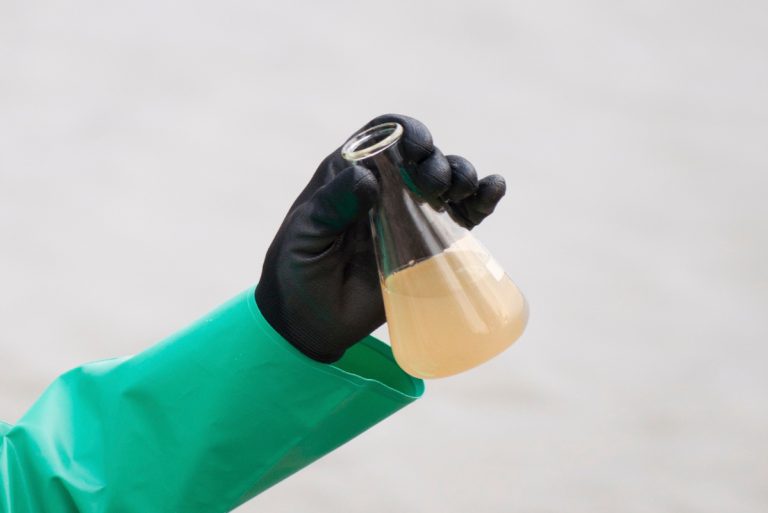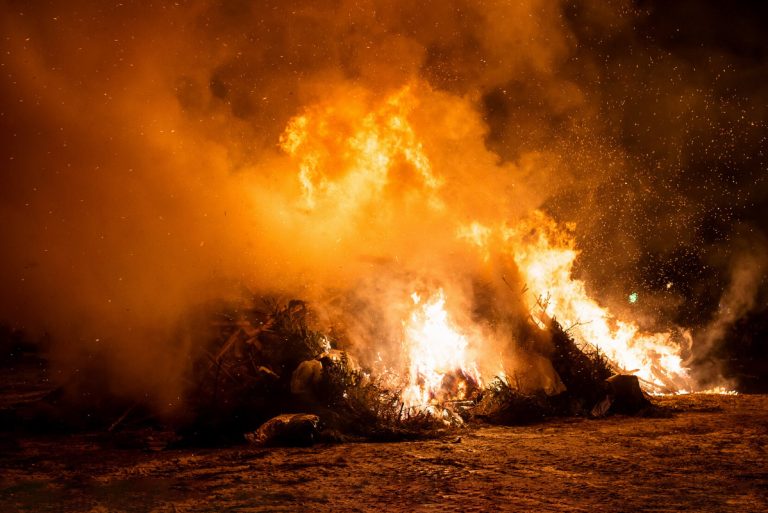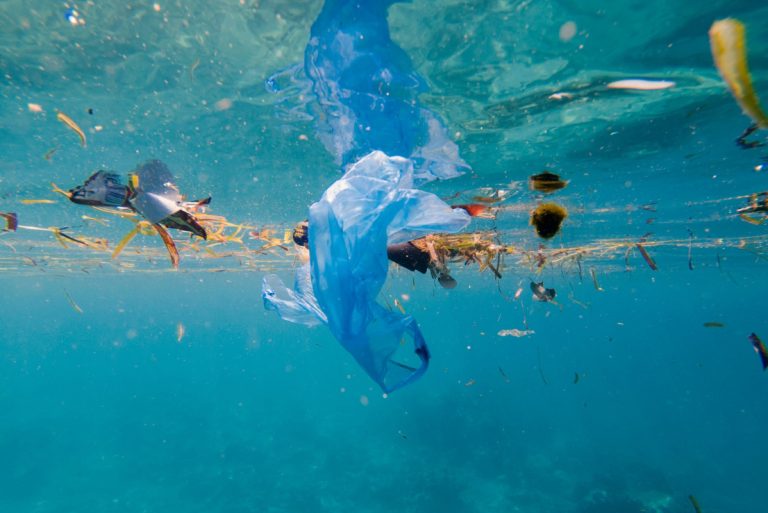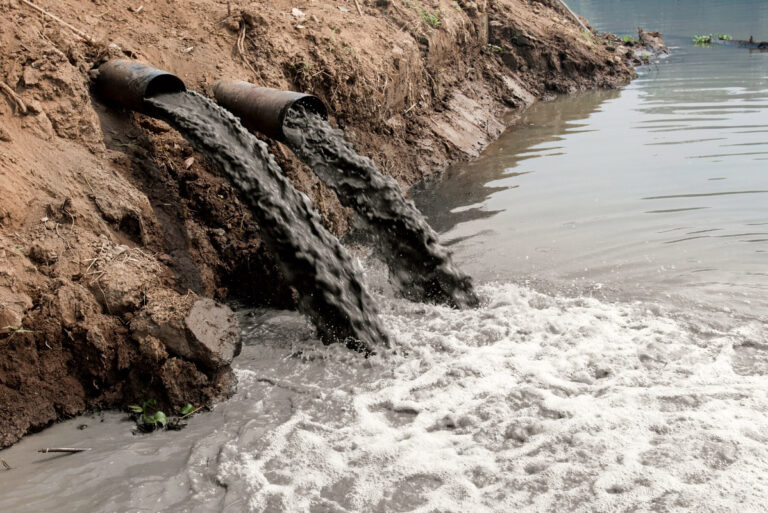In the U.S., around 13 million households get their drinking water from a well that retrieves groundwater from the ground. Around the globe, this number is even larger: half of the world’s population utilizes groundwater, making it a critically important resource for the sustenance of human life.
However, like most resources, groundwater is highly susceptible to pollution and contamination. You may be wondering: what is groundwater pollution, and what causes it?
Groundwater pollution occurs when hazardous or toxic chemicals and materials contaminate groundwater. This renders the water unusable, and can cause serious health, environmental, and socio-economic effects.
Let’s dive into everything you need to know about what causes groundwater pollution, why it’s important, and how we can prevent it.
What is groundwater?
It’s important to grasp some key facts about groundwater and how it forms, to understand its significance and the causes of groundwater pollution.
By definition, groundwater is water that exists underground in saturated zones beneath the land surface, and the upper surface of the saturated zone is called the water table.
Underground, groundwater fills the spaces between sand, gravel, and other rock forms. Gravity pulls water down towards the center of the Earth, gradually filling in the fractures in rock and sediment.
If groundwater flows naturally out of these rock materials or if it can be drawn up to the surface, the rock materials are called aquifers. Through these aquifers, water flows very slowly and horizontally towards bodies of water like rivers and lakes.
So, how is groundwater created?
First, precipitation and evaporation deposit water on the surface of the Earth. Then, snowmelt, runoff, and streamflow move water across the landscape, where it is gradually deposited below the surface and becomes groundwater.
Groundwater is a vitally important resource: it provides drinking water for over half the world’s population, and farmlands rely on it for irrigation purposes.

What is groundwater pollution?
There’s no doubt that pollution is harming the Earth and the lives of human beings: it results in negative health issues, toxic air and water, and environmental damage.
Groundwater, unfortunately, is not immune to pollution. When groundwater is contaminated, human activity is almost always behind it.
When pollutants like gasoline and chemicals like pesticides and parabens runoff into groundwater deposits, the water is no longer safe to use. In this way, groundwater is most likely to be contaminated in highly populated areas with lots of land use.
But do these pollutants always come from our oceans or large bodies of water? Not necessarily.
Any activity that releases chemicals and pollutants into the environment has the potential to contaminate this precious resource.
There are several common contaminants that can be found in groundwater:
- Microorganisms such as bacteria, viruses, and parasites
- Pesticides, herbicides, and insecticides
- Oil and gasoline
- Household products, such as paint thinner and swimming pool chemicals
- Nitrate and nitrite
- Heavy metals, such as arsenic, copper, lead, iron, and manganese
- Volatile organic compounds (VOCs)
- Chloride
- Fluoride
- Cyanide
- Sulfate
- Radionuclides
While you may recognize some of these pollutants, many can cause damage without us even realizing it.
What causes groundwater pollution?
According to the Groundwater Foundation, there are several primary causes of groundwater pollution. These sources are often regulated on a municipal level, but individuals can also contribute and cause even more damage.
The most common causes of groundwater pollution include:
Storage tanks
Storage tanks are used across the U.S. to store gasoline, oil, chemicals, or other types of liquids and can be buried underground or above ground.
- Approximately 542,000 underground storage tanks nationwide store petroleum or hazardous substances.
- There are estimated to be over 10 million storage tanks buried in the United States.
Over time, these tanks can corrode, crack, and develop leaks. Until the mid-1980s, most tanks were made of bare steel, which is highly likely to corrode over time and allow the potentially harmful contents of these tanks to leak into the environment.
If the contaminants leak out and get into the groundwater, serious contamination can occur.
Septic systems
Septic waste disposal systems are used by homes, offices, and other buildings that are not connected to a city sewer system. Septic systems are designed to drain away human waste underground at a slow, harmless rate. In the U.S., 25% of households heavily depend on septic systems to dispose of their waste.
However, when septic systems are improperly designed, located, constructed, or maintained, they can leak bacteria, viruses, household chemicals, and other contaminants into the area’s groundwater.
Commercial septic tanks pose an even bigger threat than residential tanks, because they release organic chemicals such as trichloroethane.
According to the U.S. Environmental Protection Agency (EPA), there have been serious instances of contamination of groundwater and surface water from septic tanks. These instances involve disease-causing pathogens and nitrates contaminating the water, as well as harming sensitive bodies of water.
Uncontrolled hazardous waste
There are over 20,000 known abandoned and uncontrolled hazardous waste sites in the U.S. today.
Uncontrolled hazardous waste sites refer to areas found on either public or private property identified by a governmental body. Examples of these sites include landfills, dumps, and tank or drum farms.
These areas can pose a major threat to the quality of groundwater. Suppose there are barrels or containers in such an uncontrolled hazardous waste site filled with hazardous materials. In this case, they can leak and make their way through the soil and into groundwater
So what is considered hazardous waste? Knowing some of the most common hazardous materials that end up at uncontrolled waste sites can prevent you from disposing of them incorrectly.
- Paint thinner
- Swimming pool chemicals
- Cleaning solvent
- Spent acids and bases
- Metal finishing wastes
- Batteries (can contain acids and bases, as well as metals like lead and cadmium)
- CRT-based computer monitors (they contain lead)
- Thermostats and fluorescent lamps (contain mercury)
- Renovation and demolition waste (can contain lead-based paint)
When these wastes end up in landfill, chemicals can leach into the soil and eventually into the groundwater.
To prevent dangerous contamination in your community, you can contact your local waste management company to find out where to dispose of hazardous waste safely.
Landfills
Most human waste is taken to landfills to be buried or burned. There are a variety of types of landfills, such as those for industrial waste and construction, demolition, and coal combustion. In the U.S. alone, there are 2,000 active landfills.
Accurately built and maintained landfills are supposed to include a protective bottom layer separating waste from the ground to prevent contaminants from getting into the water.
However, if there is no layer or it is cracked, contaminants from the landfill can, of course, make their way into the groundwater.
Chemicals and road salts
The widespread use of chemicals and road salts in the winter is another source of potential groundwater contamination. While vital in some communities to travel safely during snow and ice storms, deicing roads and highways can lead to harmful pollution.
The most common substance used for deicing roads and highways is Sodium Chloride (NaCl) or table salt, known as rock salt. Nearly half a million tons of this salt is used annually in Massachusetts alone for winter road maintenance.
In addition, road salt can also infiltrate nearby surface and ground waters and can contaminate drinking water, reservoirs, and wells. When it rains or snow melts into the ground, these chemicals can seep into the ground and eventually into groundwater.
Atmospheric contaminants
It’s critical to understand that because groundwater is part of the water cycle, contaminants in other parts of the cycle such as the atmosphere or bodies of water on the surface of the planet can eventually be transferred into our groundwater supplies.
Mining activities are one example of these other contaminants that can impact groundwater. Through precipitation and runoff, the soluble minerals from mining can be leached from mining into groundwater.

Why is groundwater pollution a problem?
Groundwater pollution is a huge problem for humans, the planet, and wildlife. Let’s dive into exactly what groundwater contamination can do and who it affects the most.
Negative health effects
Drinking contaminated groundwater can have negative health effects that must be taken seriously.
Contamination from septic tank waste can cause diseases like dysentery, a disease which can lead to diarrhea, dehydration, and, in some cases, death. The waste may even contain hepatitis-causing bacteria that can lead to irreversible damage to the liver.
Additional health problems can stem from groundwater polluted by pesticides, fertilizers, or natural chemicals. The long-term effects of drinking from contaminated groundwater include the development of certain types of cancer.
Environmental impacts
When pollutants mix with bodies of water, many negative consequences can occur that can alter ecosystems for the worse, impacting plant, animal, and aquatic life.
Aquatic plants and animals may die off quickly as a result of too many contaminants in the bodies of water that are toxic to them.
Groundwater contamination can also negatively affect the quality of lands and forests. Contaminated groundwater can lead to soil contamination and degradation of land quality. For example, in many agricultural areas, high groundwater salinity leads to increased levels of salt in the soil.
Socio-economic impacts
When groundwater is contaminated, the area is incapable of sustaining plant, human, and animal lives. The contamination can lead to decreased land value and even lower population.
In this way, groundwater pollution has the potential to affect local industries economically. It can lead to decreased stability in industries that rely on groundwater to produce their goods. These industries must outsource water from uncontaminated regions, which can cost more and even lead businesses to close.
Depending on the severity of contamination, a groundwater supply may have to be abandoned as a drinking water source. If the groundwater can be restored, it can cost thousands to millions of dollars to resolve, and the water quality will have to be monitored for years to come.
Experts warn that water shortages induced by contamination may cause conflicts among citizens in the future, possibly delaying the socio-economic development of a nation or community.
At-risk populations
Clearly, the negative impacts of groundwater pollution stand to impact all of us. However, well owners are at a greater risk of groundwater contamination than those who use a municipal water supply.
Wells are often located in agricultural and rural areas where the chances of agricultural runoff, mining, and septic tank use are higher.
Certain groundwater contaminants are also more prevalent in rural areas, such as farming towns, where pesticides and fertilizers are used frequently and in large quantities.
Well owners are responsible for testing their own water supply to identify any sources of pollution or evidence of contamination. Alternatively, if a municipal water source is contaminated, the burden is on the municipality to address the issue.
When groundwater is contaminated, it can cause a multitude of problems for the environment, human well-being, and businesses.
What can we do to help prevent groundwater pollution?
It’s clear that we must take the consequences of groundwater pollution seriously. But what can be done to prevent this serious problem?
Prevention is key! On an individual level, there are a few considerations that everyone should keep in mind to prevent contaminants from entering the groundwater supply:
- Properly dispose of all waste. Don’t dump chemicals down the drain. Instead, contact your local health department to find a hazardous waste collection site near you.
- Safely store all chemicals, fuel, paint, and pharmaceutical products.
- Minimize the use of chemicals and always use chemicals according to directions.
- Frequently inspect underground storage tanks and septic systems for leaks.
- Plant grasses and plants that are native to your region – these plants have already adapted to your area’s climate and therefore do not require a lot of fertilizer, pesticides, or herbicides.
- Opt for self-care and makeup products that are non toxic and come in recyclable packaging to prevent items from ending up in a landfill.
On a municipal, federal, and state level, there are a variety of ways in which our leaders can help prevent groundwater pollution.
Management of hazardous entities
It’s critical to properly maintain landfills, hazardous waste sites, and underground storage tanks and pipes so that they are less likely to leak harmful contaminants into groundwater.
In addition, landfills must be placed in areas that are far from groundwater areas.
Recycling
Together with other environmental organizations, states can mobilize residents to participate in recycling programs by providing accurate information and resources.
Regulations
There are federal laws in most countries that help protect the quality of groundwater. In the U.S., The EPA enforces requirements under the Clean Water Act (CWA) and Safe Drinking Water Act (SDWA).
The EPA works to enforce these acts and ensure that the regulated community obeys environmental laws and regulations through on-site visits by qualified inspectors, and a review of information required by the organization.
So what is groundwater pollution, and can it be prevented?
Now that the question ‘what is groundwater pollution?’ has been successfully answered, it’s clear to see that this matter is not to be taken lightly.
The negative health, environmental, and socio-economic effects of contaminated groundwater pose a large thread to the well-being of our planet as well as humans and wildlife. Though there are some causes of groundwater pollution that the typical individual cannot control, there are steps you can take in preventing this issue. Properly disposing of your waste and making greener choices in your home and personal life can help prevent the contamination of groundwater for all.











